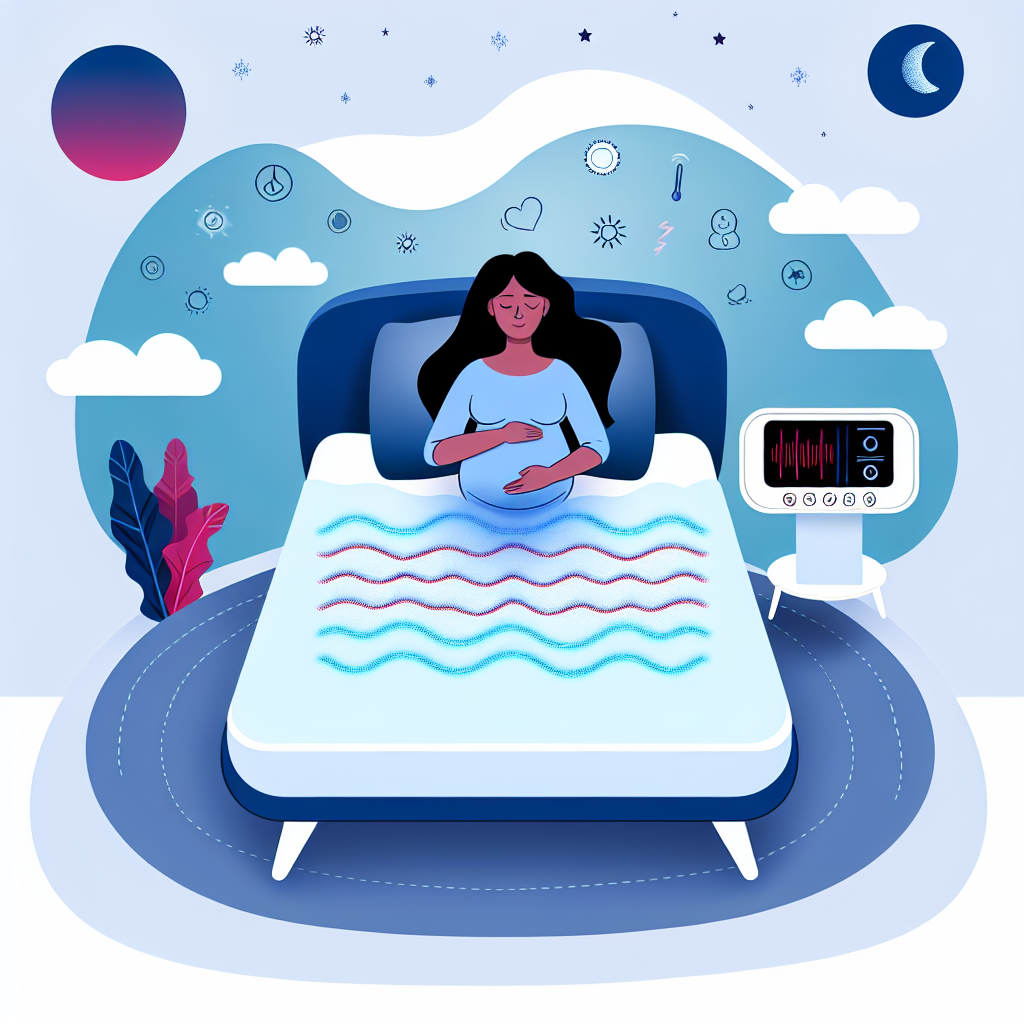Pediatric Sleep Case Study – Solving Night Terrors Through Environment
Introduction
Night terrors, also known as sleep terrors, are episodes of intense fear, screaming, and physical agitation that occur during sleep, typically affecting children between the ages of 3 and 8. These episodes usually occur during the non-REM stages of sleep, particularly within the first few hours after falling asleep. Unlike nightmares, children experiencing night terrors are often inconsolable and rarely recall the event upon waking.
Children suffering from night terrors endure significant emotional and physical disruption. These issues also affect caregivers, who often experience worry and sleep deprivation themselves. While the causes of night terrors are multifactorial—involving elements like genes, fever, and sleep deprivation—one of the most manageable contributing factors is the child’s sleep environment.
Current pediatric research emphasizes the potential of managing such sleep disorders via non-pharmacological interventions. These include changes to environmental stimuli such as room temperature, lighting, ambient sounds, and sleep routines. There is growing consensus that systematically improving the sleep environment offers a gentle, effective alternative to medication for managing parasomnias such as night terrors.
This case study presents the case of Mia, a 5-year-old girl whose recurring night terrors were effectively resolved through environmental interventions. It illustrates how adopting a structured bedtime routine and optimizing the sleep environment contributed to a complete cessation of symptoms—without drug therapy.
This study aims to guide not only caregivers and physicians but also educators, pediatric therapists, and anyone involved in a child’s care. It advocates for a holistic understanding of pediatric sleep behavior by examining how simple environmental changes can improve brain function, emotional regulation, and general well-being.
Case Study and Supporting Research
Mia, aged 5 and living in Chicago, began experiencing alarming night terrors about three months before seeking professional guidance. These incidents occurred 2 to 3 times weekly during the initial hours of bedtime. Symptoms included piercing screams, heavy sweating, a racing heart rate, and difficulty waking her up. Importantly, she remained unaware of these episodes the next morning.
Medical evaluations eliminated conditions like epilepsy, medication side effects, or infection. Upon investigation, the home environment revealed high sensory stimulation and a lack of bedtime consistency. Her sleep architecture was likely compromised by these factors.
The intervention began with establishing a consistent bedtime routine. According to the American Academy of Sleep Medicine (AASM) and Sleep Research Society (SRS), proper sleep hygiene and structured routines decrease occurrences of parasomnias. These routines help regulate circadian rhythms, lower stress levels, and improve melatonin production.
Next, Mia’s sleep environment was modified to reduce stimuli affecting relaxation and melatonin secretion. One of the primary changes involved removing all digital screen exposure at least one hour before sleep. Exposure to blue light interferes with melatonin production, leading to delayed sleep onset and poor sleep quality. A 2017 study in Sleep Health confirms that children with screen exposure before bedtime exhibit more frequent awakenings and shorter sleep duration.
To enhance the calming environment, several sensory tools were integrated, including:
– Use of blackout curtains to block external lights and facilitate deep sleep.
– Installation of a white noise machine to mask environmental sounds, such as street noise or household activity.
– Maintenance of a sleep-friendly room temperature between 65–70°F, which supports stable thermoregulation.
– Introduction of aromatherapy using lavender essential oil, known for reducing the sympathetic nervous system’s activity and encouraging deep sleep stages.
According to research from Lillehei & Halcón (2014), the use of lavender has shown significant improvement in children’s sleep quality, particularly increasing time spent in restorative deep sleep stages (N3 sleep).
Over the following four weeks, Mia’s episodes declined dramatically—from multiple occurrences weekly to fewer than one per month. By the third month, her night terrors had disappeared. Additional benefits were noted in her daily life: improved school behavior, better concentration, and more consistent energy levels. Her parents also reported less stress due to improved nighttime stability and morning moods.
This outcome reinforces the assertion from researchers like Mindell et al. (2022) that brief, consistent bedtime routines significantly enhance pediatric sleep outcomes. When combined with environmental changes, these routines lay a strong foundation for better neurochemical balance during sleep cycles.
Conclusion
Mia’s case shows that night terrors, while distressing, are highly treatable through non-pharmacological environmental strategies. For caregivers and healthcare professionals, the first line of intervention should involve an audit of the sleep space—addressing environmental triggers and reinforcing calming, consistent sleep hygiene.
Transforming a bedroom into a safe, sensory-balanced environment helps reduce restless sleep behaviors while optimizing brain healing during non-REM stages of sleep. Such actions help children build resilience, emotional regulation, and cognitive functioning. They also promote better physical growth since the most restorative sleep phases directly influence growth hormone production.
In the wider context, adopting holistic and practical interventions helps limit unnecessary medications and supports the child in thriving emotionally, mentally, and physically. Addressing sleep health is not just a response to disorders—it is preventive care promoting overall childhood development.
Concise Summary
This case study highlights how a 5-year-old child’s persistent night terrors were successfully treated using non-pharmacological sleep environment modifications. By establishing a structured bedtime routine, eliminating screen time before bed, controlling room temperature, using aromatherapy, and reducing ambient light and noise, the episodes ceased within three months. Mia experienced improved behavior, better daily energy, and enhanced emotional well-being. This case emphasizes the importance of holistic strategies in pediatric sleep health and validates the role of environmental changes in managing night terrors effectively and gently.
References
– American Academy of Sleep Medicine – Pediatric Sleep Tools
– Hale, L., & Guan, S. (2015). Screen time and sleep among school-aged children and adolescents. Sleep Health
– Lillehei, A. S., & Halcón, L. L. (2014). Systematic review on essential oils and sleep. Evidence-Based Complementary and Alternative Medicine
– Mindell, J. A., et al. (2022). Short bedtime routines and sleep improvement. Pediatrics
For further research-based insights on pediatric sleep health, visit our main page at www.medoze.com

Dominic E. is a passionate filmmaker navigating the exciting intersection of art and science. By day, he delves into the complexities of the human body as a full-time medical writer, meticulously translating intricate medical concepts into accessible and engaging narratives. By night, he explores the boundless realm of cinematic storytelling, crafting narratives that evoke emotion and challenge perspectives.
Film Student and Full-time Medical Writer for ContentVendor.com




